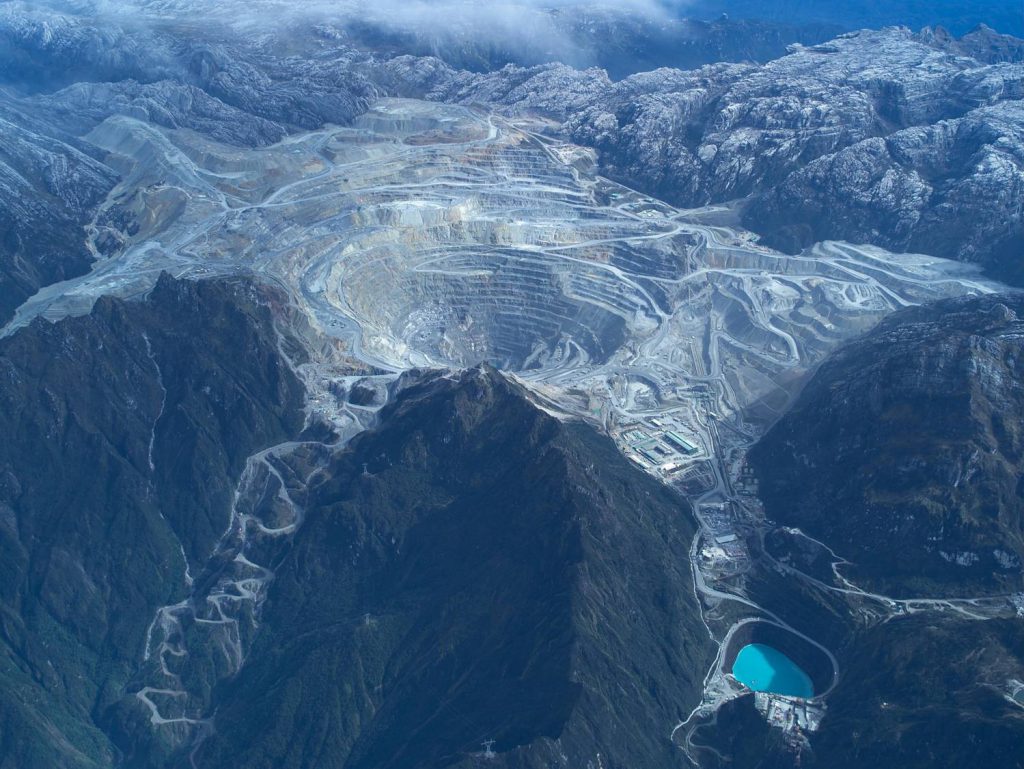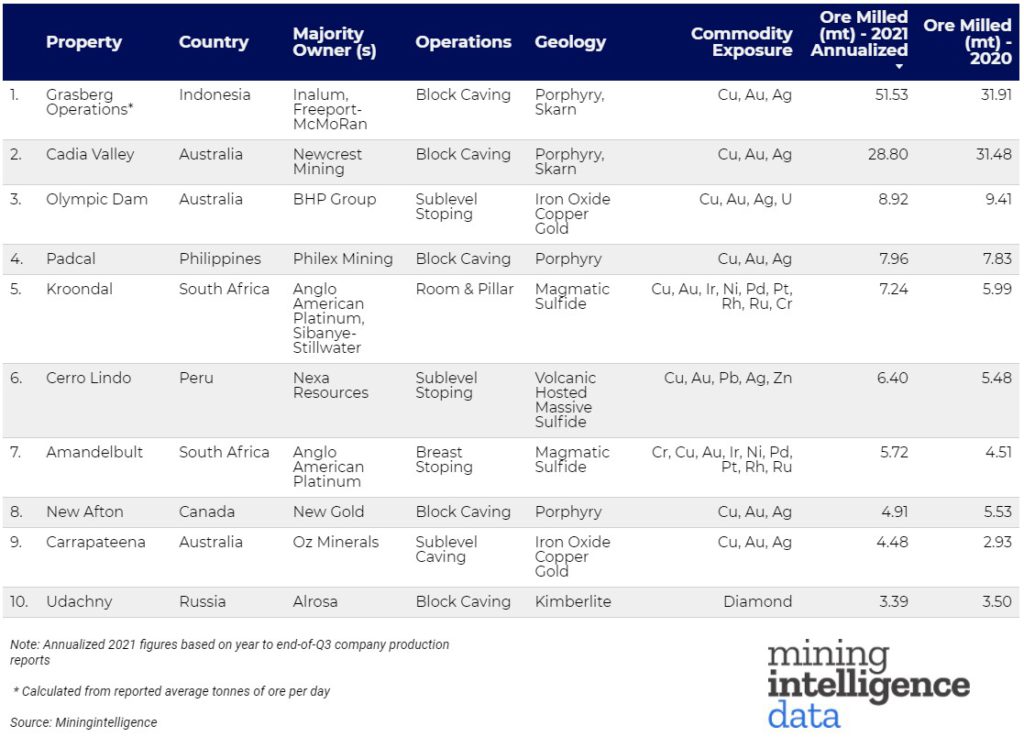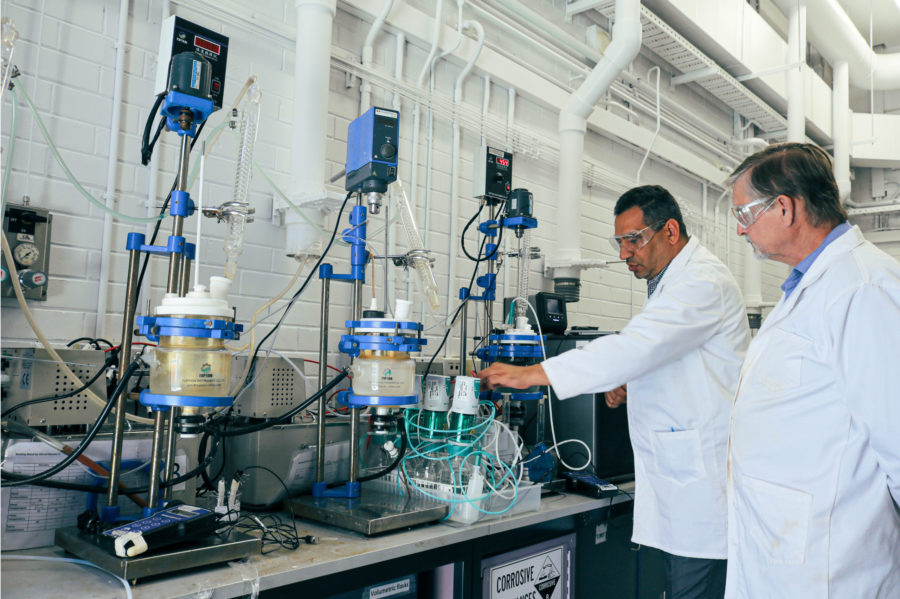RANKED: World’s 10 biggest underground mines by tonnes of ore milled

Ore is every miner’s paydirt, and the more ore – a natural aggregation of one or more minerals that can be mined, processed, and sold at a profit – the bigger the paycheque.
The number of tonnes extracted from the earth in a day can be vast at the world’s largest mines, and the ore that contains sufficient valuable mineral to be treated by milling process is what ends up going into the processing plant compared to run of mine ore production.
Also read: World’s top 10 biggest mines by tonnes of ore mined
Using data compiled by our sister company Miningintelligence, our latest top ten list ranks the world’s biggest underground mines by tonnes of ore milled.

*This ranking excludes bulk commodities such as iron ore, potash
#1 Grasberg
Mining method: block caving. Geology: porphyry, skarn
In first place is the iconic Grasberg copper-silver-gold mine in Indonesia, a joint venture between Inalum (51.24%) and Freeport-McMoRan (48.76%). Based on the figures provided to the end of Q-3 2021, 51.53mt of milled ore is forecasted for the year. Grasberg is moving to an entirely underground operation – nearly doubling copper and gold output in the process.
#2 Cadia Valley
Mining method: block caving. Geology: porphyry, skarn
In second place is Newcrest’s Cadia Valley mine in Australia, where 28.8 million tonnes (mt) of copper, silver and gold milled ore is projected for the year, based on data available through to the end of Q3 2021. Newcrest expects to begin the early works program for an expansion which includes the development of the P2-C3 block cave by the end of the year. First production for this is forecasted for 2026.
#3 Olympic Dam
Mining method: sublevel stoping. Geology: Iron oxide, copper, gold
Third place goes to BHP’s Olympic Dam mine, also in Australia. Based on ore milled to the end of Q3, total estimated for the year is 8.92mt of copper, gold, silver and uranium ore. Last year, the world’s biggest miner shelved a planned $2.5 billion expansion after studies of the ore body revealed weaker than anticipated results.
#4 Padcal
Mining method: block caving. Geology: porphyry
Coming in fourth is Philex Mining’s Padcal mine in the Philippines. Based on annualized production figures, 7.96mt of copper, silver and gold ore is expected for 2021. In 2018, Padcal alone accounted for 9% of gold output in the country. The mine has been in operations since 1958 but is expected to close in 2022.
#5 Kroondal
Mining method: room and pillar. Geology: magmatic sulphide
The number five spot goes to Anglo American Platinum and Sibanye Stillwater’s jointly owned Kroondal mine in South Africa. Based on annualized figures, estimated for the year is 7.2mt of copper, silver and PGM ore milled.
#6 Cerra Lindo
Mining method: sublevel stoping. Geology: volcanic hosted massive sulphide
In sixth place is Nexa Resources’ Cerra Lindo mine in Peru. Based on the data, estimated for the year is 6.40mt of milled copper, silver, gold lead and zinc. Folllowing a dispute with Chavín y Valle de Topará farming communities in Peru’s western department of Ica, Nexa reached a deal last year related to the benefits people are expecting to receive for allowing the Cerro Lindo operation near their respective towns.
#7 Amandelbult
Mining method: breast stoping. Geology: magmatic sulphide
Anglo American Platinum’s Amandelbult in South Africa is in seventh place, with 5.72mt of platinum group metals, copper, nickel and silver milled ore expected for the year.
#8 New Afton
Mining method: block caving. Geology: porphyry
In eighth place, New Gold’s New Afton mine in British Columbia, Canada is expected to mill 4.91mt of copper, silver and gold ore this year. New Gold was also granted its mining permit for the B3 zone of New Afton this year.
#9 Carapateena
Mining method: sublevel caving. Geology: iron oxide, copper, gold
Oz Minerals’ Carapateena mine is in ninth place, where 4.48mt of copper, silver and gold milled ore is expected for the year. The Carapateena discovery that Teck saw as its big foreign play until the financial crisis was acquired by OZ Minerals in 2011.
#10 Udachny
Mining method: sublevel caving. Geology: kimberlite
The only diamond mine to make the list rounds it out — Alrosa’s Udachny mine in Russia, based on figures to end Q3, is projected to mill 3.39mt of ore this year. This year, Alrosa also announced plans to convert an additional 166 vehicles in Udachny and Lensk to natural gas in a move to cut emissions.
Honorable mentions for 2021 go to Boliden’s Garpenberg copper-silver-gold-lead-zinc mine in Sweden, where, based on the figures provided to the end of Q-3 2021, 3.07mt of milled ore is forecasted for the year, and Barrick Gold’s Jabal Sayid mine in Saudia Arabia, which is expected to produce 2.16mt of milled ore.
More data is available at Miningintelligence.





9 Comments
Josh Nelson
No El Teniente or Grasberg?
Amanda Stutt
Hi Josh, the article has been updated – thank you for pointing this out.
Grasberg reports tonnes per day rather than per quarter- also
operations just moved underground this year!
Codelco does not break down mill rates for individual mines, which is why Teniente
is not on the list.
Best,
Amanda
Kid Alvarez
El Teniente mine processes 150,000 metric tons of copper ore per day at their concentrator plants.
Regards,
Oulu Suomi
Swedish LKAB’s Kiruna mine has approx. 27 Mt ore mining per year from underground mine.
Amanda Stutt
Thanks for this Oulu, we excluded bulk commodities from this ranking.
Best,
Amanda
Robert McVeigh
Several potash mines should be on this list based on the title of the article. As would Goderich Salt mine. Kiruna as well I would expect. They are underground mines.
Jason
Here is the largest underground potash mine, the title bounces between Mosaic Esterhazy and it’s neighbour Nutrien Rocanville. Around 21mt of ore per year. https://mosaicincanada.com/mosaic-in-canada/News-Article/Mosaic%E2%80%99s-Esterhazy-Operation-One-of-the-Largest-Most-Competitive-Potash-Mines-in-the-World
Amanda Stutt
Hi Jason, thanks for reaching out. This ranking, published in Dec 2021,
excludes bulk commodities such as iron ore and potash, which is noted in
the disclaimer.
Best,
Amanda
Regor Mortis
Quite dementic list. Where is Kiruna Mine, the largest underground mine in the world?